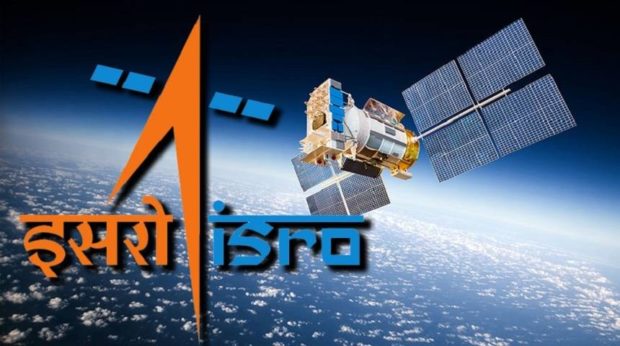
Battle against COVID: ISRO develops 3 types of ventilators, to transfer technology
PTI, Jun 7, 2021, 1:40 PM IST

Image for representation
Bengaluru: The Indian Space Research Organisation has developed three types of ventilators, and has come forward to transfer the technology to industry for clinical usage as the country battles the second wave of COVID-19 pandemic.
A low-cost and portable critical care ventilator, ‘PRANA’ (”Programmable Respiratory Assistance for the Needy Aid’) is based on the automated compression of an AMBU (Artificial Manual Breathing unit) bag.
The system has a sophisticated control system that includes airway pressure sensor, flow sensor, oxygen sensor, servo actuator as well as expiration and PEEP (Positive End Expiratory Pressure) control valves, according to an interest exploration note posted on the website of Bengaluru- headquartered space agency.
The clinicians can select the ventilation mode and set the required parameters through a touch screen panel and monitor various parameters like pressure, flow, tidal volume and oxygen concentration on the same screen.
The ventilator can deliver the required flow of oxygen-air mixture to the patient’s lung at a desired rate set by the clinicians.
It has a provision to attach external battery for backup during power failure.
ISRO said PRANA supports both invasive and non- invasive ventilation modes and is capable of giving mandatory breaths (controlled by ventilator) as well as spontaneous breaths (controlled by the patient).
A robust algorithm for controlled and safe ventilation of the patient is implemented which raises alarm and opens safety valves to prevent barotrauma, asphyxia and apnoea during the ventilation.
Alarm is also raised in case of wrong or improper connection of the ventilation circuit or inadvertent disconnection of the hose or sensors.
There are also provisions to attach bacterial viral filters at each interface to prevent cross-infection and the contamination of air.
The ICU grade positive pressure mechanical ventilator titled ‘VaU’ (abbreviation of Ventilation assist Unit) can assist or replace the spontaneous breathing in patients under respiratory distress, ISRO said.
VaU is based on a centrifugal blower which draws in filtered ambient air, compresses it and delivers it to the patient to achieve ventilation and can therefore operate without a compressed pneumatic source.
Provision is also given in the ventilator to connect a high pressure oxygen source, from which oxygen is metered automatically, to achieve the desired oxygen concentration (FiO2) in the inspiratory flow.
Microcontroller based control module in the ventilator acquires signals from an array of sensors and commands the electro-pneumatic components to effect closed loop control.
VaU also comes with an intuitive Human Machine Interface (HMI) System running on a medical grade touch screen PC, which allows the operator to set and monitor various ventilation parameters in real time.
A power supply unit, which can operate with 230VAC or an internal battery pack, is used to power the electro- pneumatic components, controller, and the HMI system of the ventilator.
VaU has been configured to operate in a variety of patient/ventilator triggered invasive and non-invasive ventilation modes and has provisions to detect fault conditions and raise alarms through the HMI system to alert the operator.
Gas-powered ventilator ‘Space Ventilator Aided System for Trauma Assistance (SVASTA)’, a basic mode for non- invasive ventilation, is well-suited for emergency use for first line treatment and as transit ventilators inside vehicles, according to ISRO.
The basic design is simple, and the components can be easily mass produced for emergency use in pandemic like situations.
This ventilator, which runs on compressed air, is able to perform various ventilation conditions using manual mechanical settings.
The system is capable of pressure control ventilation (PCV) in its basic mode of operation with provision for setting different tidal volumes.
The basic ventilator design can be re-engineered appropriately by the manufacturer to cater to various modes of ventilation with control systems, electronics, and associated software, it was stated.
The prototype of the three ventilators developed at Thiruvananthapuram-based Vikram Sarabhai Space Centre (VSSC), a major space research centre of ISRO, has undergone in-house test & evaluation and meets various specifications.
The responsibility of obtaining mandatory certification from approving agencies of government of India before clinical usage vests with the industry, the ISRO note said.
ISRO said it intends to transfer the technology of these three ventilators toPSUs/ industries/ start-ups having good track record in manufacture of critical medical/ electronic equipment manufacturing.
It invited Interested industries/ entrepreneurs to submit their expression of interest before June 15.
Udayavani is now on Telegram. Click here to join our channel and stay updated with the latest news.
Top News

Related Articles More

Army Havaldar Anoop Poojary cremated with full honours in Karnataka’s Udupi

Mahatma Gandhi’s legacy under threat from those in power in Delhi: Sonia Gandhi

PM not ready to accept mistake on ‘insult’ to Ambedkar; we will fight for his respect: Kharge

Present Cong not original, fake Gandhis doing politics in name of Mahatma Gandhi: Kumaraswamy

BJP to protest against Congress’s Belagavi Session over alleged use of public funds
MUST WATCH
Latest Additions

Army Havaldar Anoop Poojary cremated with full honours in Karnataka’s Udupi

13-year-old rape victim dies after giving birth to stillborn baby in Rajasthan’s Dungarpur

YouTuber and his girlfriend rescued from drowning by IPS officer in Goa

Row over Shah’s Ambedkar remarks: Dalit, Adivasi, OBC groups to protest in Gujarat on Dec 28

Kerala bids emotional farewell to MT Vasudevan Nair
Thanks for visiting Udayavani
You seem to have an Ad Blocker on.
To continue reading, please turn it off or whitelist Udayavani.




















